Artesunate
Synonym(s):Artesunate
- CAS NO.:88495-63-0
- Empirical Formula: C19H28O8
- Molecular Weight: 384.42
- MDL number: MFCD00866204
- EINECS: 618-170-5
- SAFETY DATA SHEET (SDS)
- Update Date: 2025-12-25 11:31:46

What is Artesunate?
Absorption
The Cmax of artesunate is 3.3μg/mL while the Cmax of the active metabolite DHA is 3.1μg/mL. The AUC of artesunate is 0.7μg*h/mL while the AUC of DHA is 3.5μg*h/mL. After intravenous artesunate, DHA has a Tmax of 0.5-15 minutes in adult patients and 21-64 minutes in pediatric patients. Intramuscular artesunate has a Tmax of 8-12 minutes. Infants less than 6 months old will have a higher AUC due to an undeveloped UGT metabolic pathway.
Toxicity
Data regarding overdoses of artesunate are rare. Patients experiencing an overdose may present with pancytopenia, melena, seizures, multiorgan failure, and death. Treat overdose with symptomatic and supportive measures.
Description
Artemisinin is a venerable malaria drug that was introduced more than 40 years ago. It was the Molecule of the Week for December 12, 2005.
Artemisinin is an excellent remedy for malaria. For many years, however, its supply has been unpredictable. The sole source of the drug is the sweet wormwood plant (Artemisia annua) that grows in Southeast Asia; but its production cycle is vicious. Farmers grow the plant only when prices are high; the inevitable oversupply lowers prices and production drops, raising prices again.
As a result, medicinal researchers sought to synthesize an artemisinin precursor that would ensure a constant supply of the drug at lower cost than agricultural artemisinin. Sanofi (Gentilly, France) developed a synthesis of artemether (Figure 1), which it commercialized in 2013. Unfortunately, the project failed because the semisynthetic artemisinin could not be produced less expensively than the farmed product.
Since then, drug researchers concentrated on improving the yield of artemisinin and its derivatives from A. annua. For example, the leaves of the plant contain as much dihydroartemisinic acid (DHAA) as artemisinin. Earlier this year, Kerry Gilmore and Peter H. Seeberger at Max Planck Institute of Colloids and Interfaces (Potsdam, Germany) reported that crude extracts of A. annua can be fed into a photochemical flow reactor to produce artemisinin, artemether, and a third active pharmaceutical ingredient, artesunate?(Figure 2).
Artesunate turns out to be a particularly attractive malaria drug. It is much more water-soluble than artemisinin, so it can be taken by mouth* or by injection. It is safe and well-tolerated by adults and children. Its success has earned it a place in the World Health Organization''s List of Essential Medicines.
*But overdoses can be harmful; see hazard information table.
Chemical properties
Artesunate is an odorless bitter-tasting crystalline powder. soluble in organic solvents such as ethanol, DMSO, and dimethyl formamide, which should be purged with an inert gas. The solubility of artesunate in these solvents is approximately 20, 14, and 11 mg/ml, respectively. Artesunate is sparingly soluble in aqueous buffers.
The Uses of Artesunate
Artesunate, a semi-synthetic artemisinin derivative, has been shown to be effective against parasites, such as liver flukes, and has also shown cytotoxic effects on different types of tumor cell lines. artesunate belong to Antimalarial which is clinically useful for treatment of malaria and other parasitic diseases.
Background
Artesunate is indicated for the initial treatment of severe malaria. The World Health Organization recommends artesunate as first line treatment for severe malaria. Artesunate was developed out of a need for a more hydrophilic derivative of artemisinin.
Artesunate was granted FDA approval on 26 May 2020.
Indications
Artesunate is indicated for the initial treatment of severe malaria in adult and pediatric patients.
What are the applications of Application
Artesunate is a derivative of artemisinin
Definition
ChEBI: Artesunate is an artemisinin derivative that is the hemisuccinate ester of the lactol resulting from the reduction of the lactone carbonyl group of artemisinin. It is used, generally as the sodium salt, for the treatment of malaria. It has a role as an antimalarial, a ferroptosis inducer and an antineoplastic agent. It is an artemisinin derivative, a sesquiterpenoid, a dicarboxylic acid monoester, a cyclic acetal, a semisynthetic derivative and a hemisuccinate.
Preparation
Artemisinin was discovered in the 1970s as a result of an extensive screening of Chinese herbal extracts in the search of new antimalarial agents. Currently, the primary method for the production of artemisinin is the isolation from dried leaves of the plant Artemisia annua. Furthermore, the global supply of this life-saving drug exclusively from natural sources remains highly limited. As a result, a novel approaches for large-scale production of artemisinin have been developed. Artesunate is prepared from dihydroartemisinin (DHA) by reacting it with succinic acid anhydride in a basic medium.
A simplified and scalable synthesis of artesunate
brand name
Arsumax (Knoll, Switzerland).
General Description
Artesunate is a semisynthetic derivative of artemisinin used to treat malaria. It has also been shown to effective against other parasites such as liver flukes. Artesunate also demonstrates cytotoxic action against cancer cell lines of different tumor types.
Biochem/physiol Actions
Artesunate acts on the electron transport chain, generates local reactive oxygen species, and causes the depolarization of the mitochondrial membrane. It inhibits TNFα-induced production of proinflammatory cytokines via inhibition of NF-κB and PI3 kinase/Akt signal pathway in human rheumatoid arthritis fibroblast-like synoviocytes.
Pharmacokinetics
Artesunate is an artemisinin derivative that is metabolized to DHA, which generates free radicals to inhibit normal function of Plasmodium parasites. It has a short duration of action due to its short half life, and a moderate therapeutic index. Patients should be counselled regarding the risk of post treatment hemolytic anemia and hypersenstivity.
Metabolism
Artesunate is rapidly metabolized to dihydroartemisinin (DHA) by plasma esterases. DHA is glucuronidated by UGT1A9 and UGT2B7 to DHA-glucuronide. DHA-glucuronide can undergo a minor metabolic pathway to for a furano acetate derivative of DHA-glucuronide. CYP2A6 may minorly contribute to the metabolism of artesunate.
Storage
Store at -20°C
Mode of action
Artesunate is a water-soluble, semi-synthetic derivative of the sesquiterpine lactone artemisinin with anti-malarial, anti-schistosomiasis, antiviral, and potential anti-neoplastic activities. It acts on the electron transport chain to generate local reactive oxygen species and cause depolarization of the mitochondrial membrane. It inhibits TNF-induced proinflammatory cytokine production by inhibiting NF-κB and PI3 kinase/Akt signaling pathways in human rheumatoid arthritis fibroblast-like synoviocytes. Artesunate has also been shown to stimulate cell differentiation, arrest the cell cycle in the G1 and G2/M phases, inhibit cell proliferation, and induce apoptosis through mitochondrial and caspase signaling pathways. Artemisinin is isolated from the plant Artemisia annua.
Properties of Artesunate
| Melting point: | 132-1350C |
| Boiling point: | 431.1°C (rough estimate) |
| Density | 1.2076 (rough estimate) |
| refractive index | 1.4430 (estimate) |
| storage temp. | 2-8°C |
| solubility | acetone: soluble33.4mg/mL |
| form | crystalline powder |
| appearance | white crystals or powder |
| pka | 4.28±0.17(Predicted) |
| color | white to off-white |
| Merck | 14,818 |
| Stability: | Stable for 1 year from date of purchase as supplied. Solutions in DMSO or ethanol may be stored at -20°C for up to 1 month. |
Safety information for Artesunate
| Signal word | Warning |
| Pictogram(s) |
 Exclamation Mark Irritant GHS07 |
| Precautionary Statement Codes |
P261:Avoid breathing dust/fume/gas/mist/vapours/spray. P264:Wash hands thoroughly after handling. P264:Wash skin thouroughly after handling. P280:Wear protective gloves/protective clothing/eye protection/face protection. P301+P312:IF SWALLOWED: call a POISON CENTER or doctor/physician IF you feel unwell. |
Computed Descriptors for Artesunate
| InChIKey | FIHJKUPKCHIPAT-AHIGJZGOSA-N |
| SMILES | C(O[C@@H]1O[C@]2([H])O[C@@]3(C)CC[C@@]4([H])[C@H](C)CC[C@@]([H])([C@H]1C)[C@]42OO3)(=O)CCC(O)=O |
Artesunate manufacturer
New Products
Indole Methyl Resin tert-butyl 9-methoxy-3-azaspiro[5.5]undecane-3-carboxylate Boc-His(Boc)-OH 2-CTC Resin 4-Chloro-7-tosy1-7Hpyrrolo[2,3-d]pyrimidine 5,7-Dibromo-1H-indole 2,5-dichloro-N-hydroxy-4,6-dimethylpyridine-3-carboximidamide 2,2-Dimethoxy-7-azaspiro[3.5]nonane hydrochloride 4-chloromethyl-5-methyl-1,3-dioxol-2-one (DMDO-Cl) R-2-BENZYLOXY PROPIONIC ACID 1,1’-CARBONYLDIIMIDAZOLE 1,1’-CARBONYLDI (1,2-4 TRIAZOLE) N-METHYL INDAZOLE-3-CARBOXYLIC ACID 4-((2-hydroxyethyl)thio)benzoic acid 1-(TERT-BUTOXYCARBONYL)-2-PYRROLIDINONE Methyl 6-methylnicotinate 3-Pyridineacrylic acid tert-Butyl carbazate TETRAHYDRO-2H-PYRAN-3-OL 2-((4-morpholinophenylamino) (methylthio) methylene) malononitrile 3-(4-morpholinophenylamino)-5-amino-1H-pyrazole-4-carbonitrile 2,4-dihydroxybenzaldehyde 1,3-Diethyl-1,3-Diphenylurea Methyl 2-methylquinoline-6-carboxylateRelated products of tetrahydrofuran
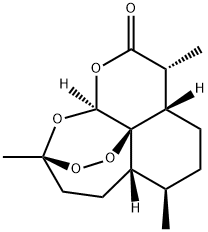
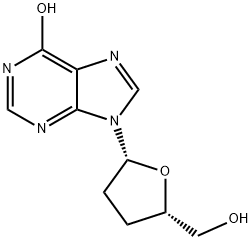
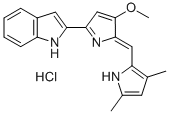
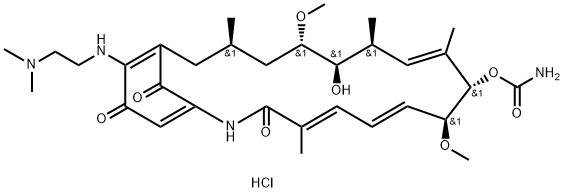
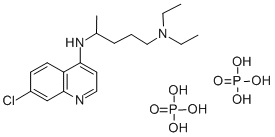
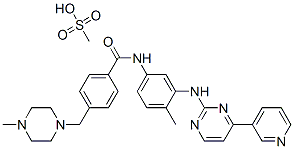
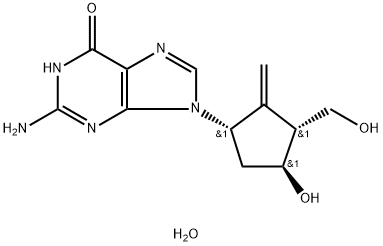
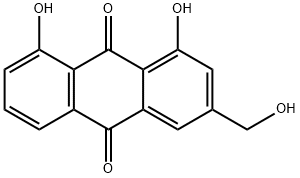
You may like
-
 88495-63-0 Artesunate 99%View Details
88495-63-0 Artesunate 99%View Details
88495-63-0 -
 Artesunate 88495-63-0 99%View Details
Artesunate 88495-63-0 99%View Details
88495-63-0 -
 Artesunate CAS 88495-63-0View Details
Artesunate CAS 88495-63-0View Details
88495-63-0 -
 Artesunate >98% (HPLC) CAS 88495-63-0View Details
Artesunate >98% (HPLC) CAS 88495-63-0View Details
88495-63-0 -
 Artesunate CAS 88495-63-0View Details
Artesunate CAS 88495-63-0View Details
88495-63-0 -
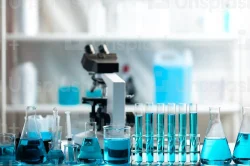 ArtesunateView Details
ArtesunateView Details
88495-63-0 -
 ArtesunateView Details
ArtesunateView Details
88495-63-0 -
 ArtensunateView Details
ArtensunateView Details
88495-63-0
